Log in or create new account to save this product to your wishlist.
The most common types of grass in the UK | MOOWY
Is your grass right for your garden? It seems like a strange question, but there could be reasons why your lawn isn't as beautiful as it could be! Read on.
Latest articles
7 MIN 22 Jul How to keep your lawn in shape this summer 9 MIN 15 Jul Watering Your Garden: 10 Top Tips! 11 MIN 15 Jul Is Your Grass Type Right for your Garden? 11 MIN 10 Sep Create Your Low-Maintenance Garden – Tips and Ideas 11 MIN 08 Sep The Ultimate Guide to Choosing the Perfect Hedges for Your Garden 12 MIN 30 Aug The Top 20 Evergreen Climbers to Transform Your GardenDo you know what types of grass you have in your garden? I say “types” because most gardens in the UK have a grass mix. Mixes are often selected to increase disease- and drought resistance, but are the types of grass in your garden suitable for how you use your lawn and your garden’s conditions?
- What are lawn grasses?
- How many types of grass are there?
- Cool-season grasses versus warm-season grasses
- The most common lawn types in the UK
- What grass seed type do I need?
- FAQs
Hmm. There’s a question. And while we shouldn’t fret about it, we can ensure that we incorporate more of the grass varieties we need when we overseed.
More about that later.
This article is about the different types of grass you’ll commonly find in British gardens. And you might be surprised to discover that grass is more interesting than you thought.
What are lawn grasses?
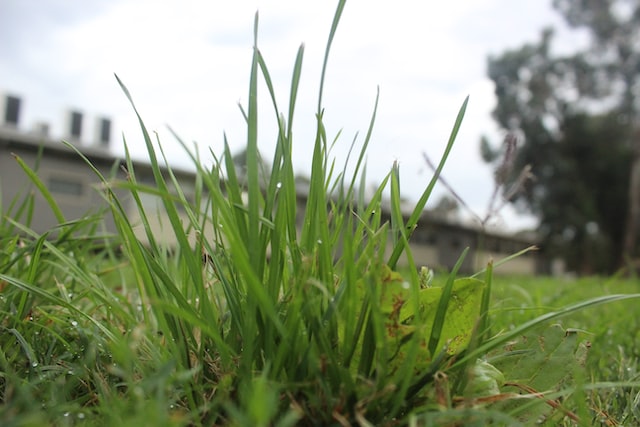
It might seem like a daft question, but have you noticed how the grass on your lawn differs from the grass you find on countryside walks?
Meadowgrass tends to be coarser than lawn grass in the UK, and well-fed turf is often a deep green colour — of course, fertilising helps.
But have you ever noticed that lawn grass is broader-leafed in more tropical climes? And when you walk on a lawn in Tenerife, for example, there’s a different foot feel — as though the turf is less yielding underfoot.
This is because various types of lawn grass are suited to different climates.
How many types of grass are there?
There are actually 160 grass species commonly found in the UK. That might sound a lot, but across the planet, there are over 11,000 species, making grasses one of the world’s most varied and adaptable plant species.
There are ornamental grasses, meadow grasses, and grasses that we eat: rice and wheat immediately spring to mind, but there are also many forageable grasses that grow in the wild.
Cool-season grasses versus warm-season grasses
The UK climate fits within zones 7-10 in the USDA hardiness zones chart (USDA is the US Department of Agriculture), which means our typical climate averages between 0℃ and 35℃. Generally, cool-season grasses are suited to regions with significant temperature fluctuations and cold winters — a fairly reliable definition of the UK’s climate.
Cool-season grasses include:
Fescues, including fine fescue, tall fescue, Kentucky Bluegrass, and Perennial ryegrass
Warm-Season grasses include:
Bermuda grass, centipede grass, St Augustine grass, Zoysia grass, Bahiagrass, and Buffalo grass
The most common lawn types in the UK
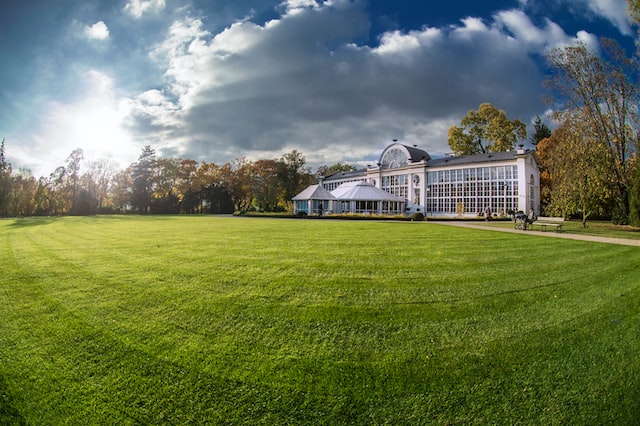
The most common grasses found in the UK are narrow-leafed varieties. They’re grown for their naturally attractive aesthetic, although heavy-use lawns require a more robust variety than an ornamental grass variety.
More about that later.
The four most common types of lawn grass in the UK are:
- Perennial ryegrass
- Annual meadowgrass
- Slender creeping red fescue
- Kentucky Bluegrass
Perennial ryegrass
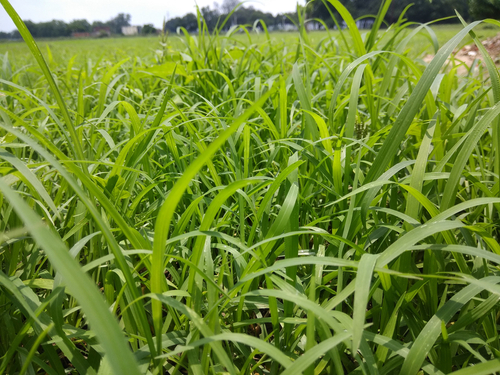
Ryegrass grows quickly and has a high level of natural resistance. We mow our lawns regularly, which means we need a grass variety with remarkable recovery powers — ryegrass is the ideal candidate.
Ryegrass provides excellent lawn coverage but needs regular mowing to look its best. During peak growing season, ryegrasses need cutting up to twice a week, requiring a lot of care. And a lot of fertiliser to keep it robust and resistant.
Nonetheless, ryegrasses are the most prevalent lawn grass choice in the UK and the US. Ryegrass seed is usually a little cheaper than other varieties, which also accounts for its popularity, but ryegrass is particularly suited to our temperate climate.
Annual meadowgrass
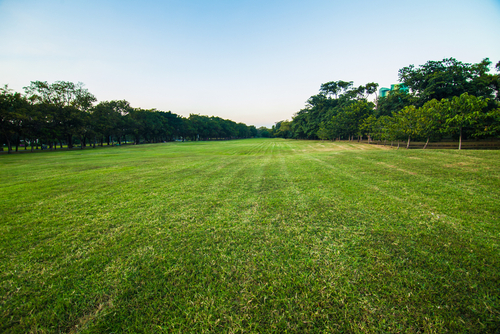
Meadowgrass is sometimes considered a weed grass because it’s likely to take root where it hasn’t been invited. Nonetheless, annual meadowgrass is favoured in the UK because of its broad adaptability.
Annual meadowgrass isn’t as fussy in terms of terrain as other British lawn grasses, so it’s a good choice for shady and soggy gardens. The dense, shallow roots make this species comfortable in all types of soil.
However, annual meadowgrass is shorter-lived than many other lawn grasses, being less resilient to drought (because of the shallower roots). Additionally, this grass variety isn’t a great fan of the winter, hence the “annual”.
Annual meadowgrass is quite needy in terms of maintenance, so it’s not the first choice for people who want a low-care lawn. You’ll find annual meadowgrass on bowling greens and golf courses, which means that annual meadowgrass is quite happy being cut short.
Slender Creeping Red Fescue
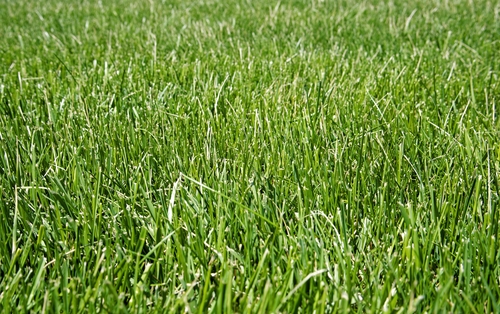
Red fescue is a slow-growing grass variety with fine, needle-like blades that creeps and spreads. This can be helpful in large lawns, preventing bald patches, but red fescue can always creep into your flowerbeds, which is less attractive.
Slender creeping red fescue is a favoured variety for bowling greens and golf courses because it’s attractive, durable, and has good drought resistance. It takes hold relatively rapidly, making this variety a popular choice for new lawns.
Kentucky Bluegrass
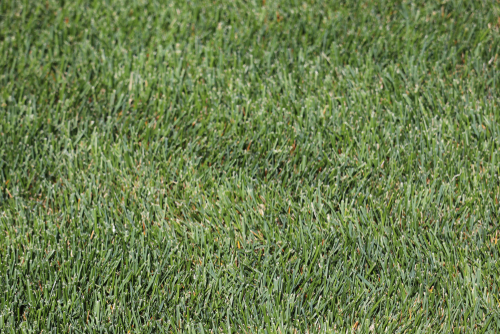
Despite the name, Kentucky bluegrass is green. So, no worries there, then.
Kentucky bluegrass has an excellent structure with plenty of aggressive sideways growth for strength. With superb winter hardiness, this variety has a remarkable capacity for self-repair. This cool-season grass variety is found widely across the UK, even up in the northernmost tip of Scotland.
However, Kentucky bluegrass doesn’t thrive in the shade and can be susceptible to street damage from drought and excessive heat.
Nonetheless, Kentucky bluegrass is a very welcome, robust grass variety as a component of a seed mix.
What grass seed type do I need?
Think first about your garden’s conditions. Is your soil well-drained and sandy or heavy clay? Is there good sunlight exposure, or is some (or all) of your lawn constantly in the shade?
And consider how you intend to use your lawn because ornamental varieties aren’t particularly robust enough to endure heavy use.
Sports & Fun

- 60% Perennial ryegrass for fine structure and fast germination
- 35% Red fescue for fullness
- 5% Kentucky Bluegrass for strong, full growth
MOOWY’s Sports & Fun lawn seed offers excellent durability for heavy-use lawns. The seeds are fast-germinating, and the beautiful grass blades proliferate once established. A mix of perennial ryegrass, red fescue, and Kentucky bluegrass, you’ll have a beautiful lawn capable of enduring ball games and parties.
Quick Repair
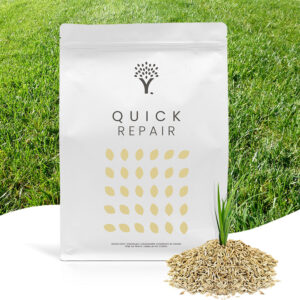
- 80% Perennial ryegrass for quick growth
- 20% Red fescue for fullness
MOOWY’s Quick Repair lawn seed is a wonderful overseeding mix. It’s designed to help repair lawn bald spots quickly, returning your turf’s vitality in no time. This mix is high in perennial ryegrass, which establishes speedily and with a fine structure. And with a 20% mix of red fescue, your lawn becomes lush and thick quickly.
Premium lawn seed
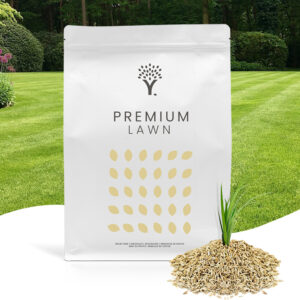
- 15% Perennial ryegrass for quick growth
- 75% Red fescue for fullness and structure
- 10% Kentucky Bluegrass for sideways growth
MOOWY’s Premium lawn seed is the choice for ornamental lawns that are more for aesthetics than heavy use. With outstanding decorative value, this mix has a high proportion of red fescue for fullness, ryegrass for fast growth, and Kentucky bluegrass for sideways growth.
Shade & Sun
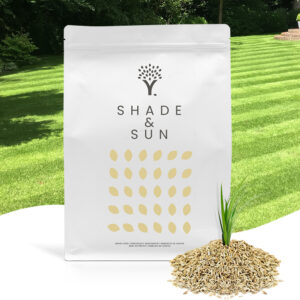
- 40% Perennial ryegrass for quick growth
- 50% Red fescue for fullness
- 10% Kentucky Bluegrass for sideways growth and strength
MOOWY’s Shade & Sun lawn seed is beautiful in sunny and shaded areas. If you have a section of your lawn that never seems to grow, this is your seed mix for guaranteed coverage — even near trees, fences, shrubs, and bushes. High proportions of perennial ryegrass and red fescue offer a robust structure. And the addition of 10% Kentucky Bluegrass helps ensure comprehensive grass coverage.
Power lawn
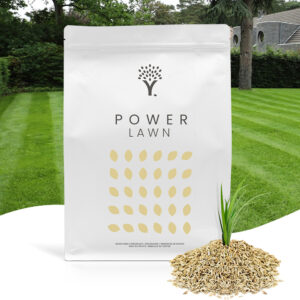
- 80% Perennial ryegrass for quick growth and beautiful colour
- 20% Red fescue for structure and fullness
If grass could wear shoulder pads, it would be in the guise of MOOWY’s Power Lawn. This hardy mix offers a long life cycle provided by perennial ryegrass and red fescue. Offering excellent fast-growing coverage, Power lawn will transform your garden into premier-league football quality in no time.
Any questions?
We hope we’ve provided the information you need to transform your lawn and choose the best seed mix for your future show lawn. But if you’ve got questions, we’d love to answer them.
Email us, and we’ll get back to you as soon as we possibly can!
Thanks for reading. 🙂
FAQs
There are hundreds of varieties of grass that grows in the UK. However, the most commonly found in lawns are perennial ryegrass, red fescue, and Kentucky Bluegrass.
It depends on which region you’re thinking about. Probably the most common type of grass is meadowgrass which grows prolifically in the wild. If you’re talking about UK lawns, the most common variety is perennial ryegrass.
There are hundreds of grass types native to the UK from grasses for crops, such as wheat and straw to edible grasses, such as rice. However, the most commonly found grasses in UK lawns are perennial ryegrass, red fescue, and Kentucky Bluegrass.
Leave a comment
Your answer will be displayed on the site and the interested party will be notified by email.
Leave a comment
Have a question or want to share your experience? Leave us a comment.
Read more
The best tips and tricks for a lush green lawn
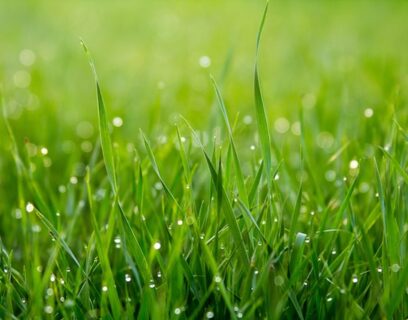 7 MIN
02 Jun
The Great Grass Seed Comparison!
7 MIN
02 Jun
The Great Grass Seed Comparison!
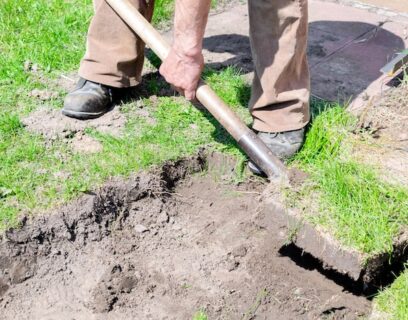 6 MIN
05 Mar
Removing Old Turf: why, when, and how?
6 MIN
05 Mar
Removing Old Turf: why, when, and how?
 Scarifying Kit
All products after scarifying | Quickly restores the lawn after scarifying | Outsmart weeds quickly with the use of this kit
From: € 39.99
Scarifying Kit
All products after scarifying | Quickly restores the lawn after scarifying | Outsmart weeds quickly with the use of this kit
From: € 39.99
 Spring Lawn Care Kit
MOOWY’s choice for the spring | Quick recovery of your lawn after winter | A strong lawn prevents weeds
From: € 25.99
Spring Lawn Care Kit
MOOWY’s choice for the spring | Quick recovery of your lawn after winter | A strong lawn prevents weeds
From: € 25.99
 Long Lasting Lawn Fertiliser
Effective for 90 days | See results in 14 days! | Suitable for all types of grass and soil
From: € 13.99
Long Lasting Lawn Fertiliser
Effective for 90 days | See results in 14 days! | Suitable for all types of grass and soil
From: € 13.99
Do you want a lawn calendar?
🌱 All important maintenance moments for your lawn during the year. Leave your email and we will send you the lawn calendar for free.
Enter your email
Receive the lawn calendar in the mail
Enjoy a green lawn all year round!




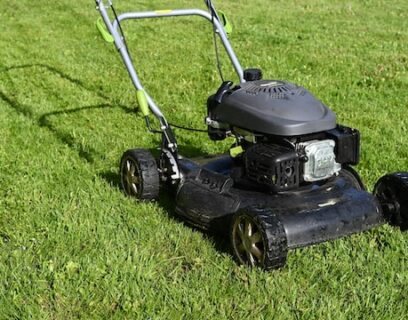






Comments (0)
There are no comments yet. Well then, what are you waiting for to
Be the first to write your comment!inaugurate this pretty page?
Do you have some comments?